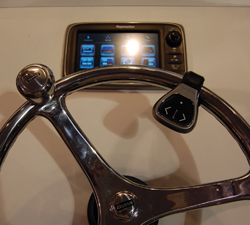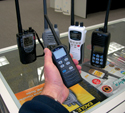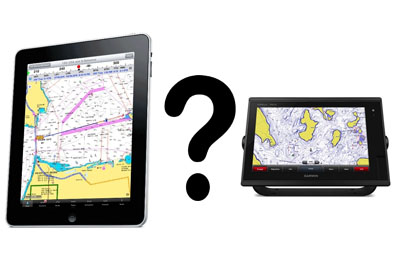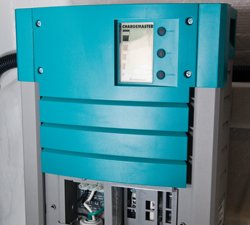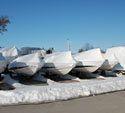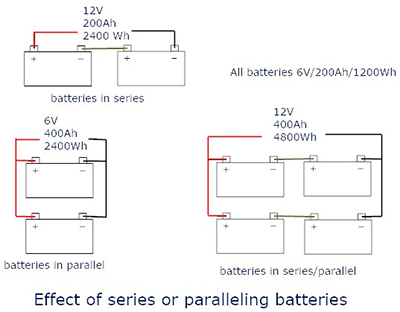Spring commissioning checklist – Part 1
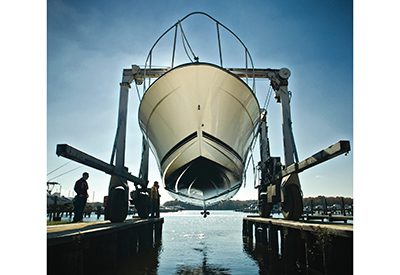
Mar 24, 2022
Everyone has their own spring ritual that often includes rooting through the basement or garage and finding the uncompleted tasks from last year.
With the help of some pros and useful advice from Sail Canada and BoatUS, CYOB has prepared a lengthy, but not necessarily complete, checklist to help you get the most out of the upcoming season.
Before You Launch
1. Inspect all around the hose clamps for rust and replace as necessary. Double clamp fuel lines and exhaust hoses with marine-rated stainless steel hose clamps. It’s wise to double clamp whenever possible on all hoses — especially those below the waterline.
2. Inspect all hoses for stiffness, rot, leaks and cracking, and replace any that are faulty. Make sure they fit snugly.
3. Inspect prop(s) for dings, pitting and distortion. Make sure cotter pins are secure.
4. Grip the prop (on inboard drive systems) and try moving the shaft up and down and side to side. If it’s loose and can be wiggled, the cutless bearing may need to be replaced.
5. Check the rudderstock to ensure it hasn’t been bent. Operate the wheel or tiller to ensure the steering works correctly. Check the rudder bearing and steering cable for unusual play or movement.
6. Inspect the hull for blisters, distortions and stress cracks.
7. Make sure your engine intake sea strainer is not cracked or bent from ice and is free of corrosion, clean and properly secured.
8. With inboards, check the engine shaft and rudder stuffing boxes for correct adjustment. A stuffing box should leak no more than two or three drops each minute when the prop shaft is turning.
9. Inspect, lubricate and exercise thru-hull valves. It’s a prudent idea to tie a right-sized wooden bung to the valve in case of failure.
10. Use a garden hose to check for deck leaks at ports and hatches. Renew caulk or gaskets as necessary.
11. Inspect and test the bilge pump and float switch to ensure they’re both working properly. Also inspect the pump’s hose.
12. Check stove and remote LPG tanks for loose fittings, leaking hoses and properly functioning shutoff systems. Use the pressure gauge to conduct a leak down test to check for system leaks.
13. Inspect dock and anchor lines for chafe and wear.
14. If equipped, ensure that the stern drain plug is installed.
15. After the boat is launched, be sure to check all thru-hulls for leaks.
Sailboat Rigging
1. Inspect swage fittings for cracks and heavy rust (some discoloration is acceptable). Inspect wire halyards and running backstays for “fishhooks” and rust. Check rope to wire splices.
2. Remove tape on turnbuckles and lubricate threads, preferably with Teflon. Replace old tape with fresh tape and ensure that water can freely drain from it.
3. If you suspect the core around a chainplate is damp, remove the chainplate to inspect and make repairs.
4. Inspect masthead sheaves and all blocks to make sure they’re running freely.
5. Check rigging for ware and rod rigging for kinks.
Paperwork
1. Review your boat insurance policy and update coverage if needed.
2. PCOC – ensure that everyone who operates the boat or might has the Pleasure Craft Operator Card and appropriate Harbour Licence.
3. A station licence is not required for Canadian boaters in Canadian waters, but you will need a VHF Station Licence if you plan to voyage in US waters.
4. ROC stands for Restricted Radiotelephone Operator’s Certificate and is required by anyone using a marine VHF radio or other marine radios (each person on the boat who will use the radio needs their own card). There are significant fines if you are found using a VHF or marine radio without your card.
In addition, if you received your ROC card before the new Digital Selective Calling was introduced, then you are encouraged to return and get your DSC endorsement for your ROC card.
All new VHF radios are now sold with a DSC function that will greatly enhance rescue personnel’s ability to assist you in an emergency. Understanding this technology and how to operate it can, in some circumstances, mean the difference between life and death.
In the April 7 issue, the Checklist continues: Engines and Fuel Systems, Outdrives and Outboards, Trailers, and Safety

